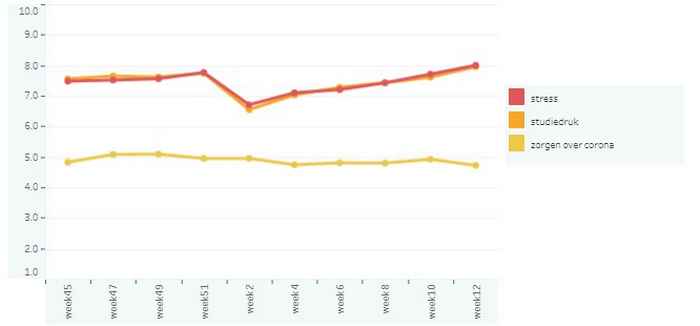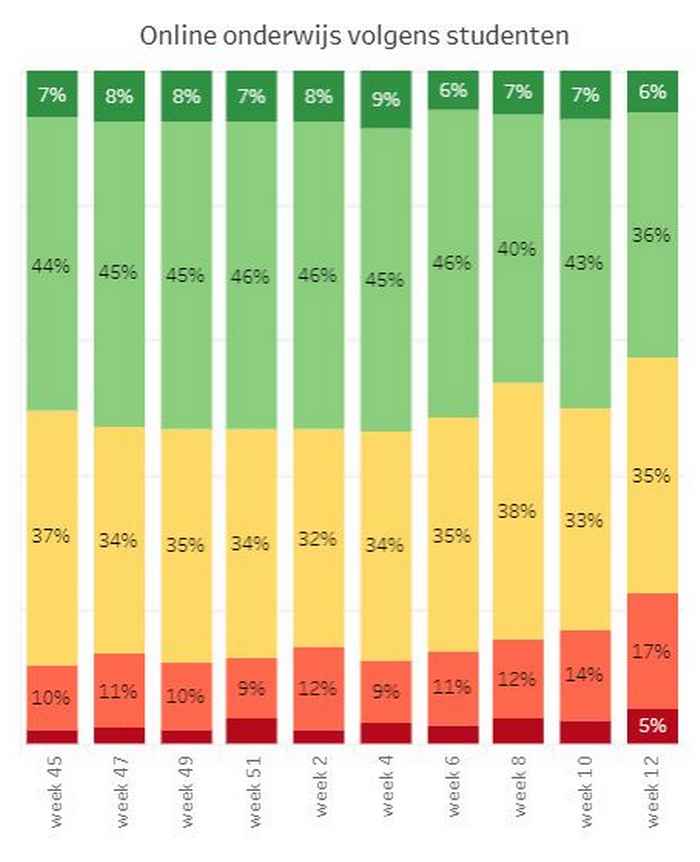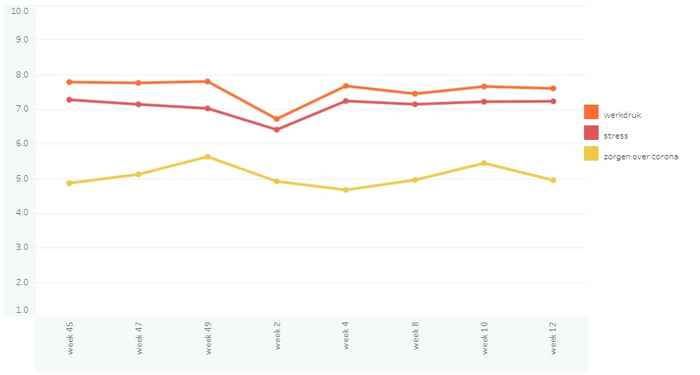UvA Crisis Monitor update: Lots of stress and high study/work pressure among students and staff
30 March 2021
Stress and study pressure for students
Since the Christmas period, the average study pressure and stress experience by students has steadily increased: study pressure from 6.6 to 8.0, and stress from 6.7 to 8.0. That is higher than in the final two months of 2020, when the peaks were 7.7 and 7.8, respectively. The peaks in study pressure and stress can always be seen in the exam periods; these were before Christmas and in week 12. The regular educational evaluations of individual subjects show no difference in study pressure compared to previous years and the pre-corona period.
It is noteworthy that the stress reported by international students is slightly higher than among Dutch students: in week 12 it was 8.3 compared to 7.8. This difference is also there for study pressure, but smaller: 8.1 compared to 7.9. Corona concerns have been fairly stable for the past five months, hovering between 4.7 and 5.1, with hardly any difference can be seen here between Dutch and international students.
Duration makes the situation more worrisome
‘The length of time for which we have been dealing with the corona restrictions is making the situation increasingly difficult for students,’ says Van Gennip. ‘The results of the Crisis Monitor in terms of reported stress and study pressure are reflected in the practices of the student counsellors and student psychologists. More and more students who are experiencing problems are coming to us. In some ways that can be seen as a positive development, because we know from experience that many students find it difficult to seek help. I cannot stress enough how important it is for them to be able to talk to someone when they are struggling. Anyone willing to lend a sympathetic ear can currently be a great help to our students.’
For example, students can contact their study adviser, student counsellors, student psychologists or general practitioner, or, if they do not have one, the practice of the student doctors of the UvA. There are all kinds of possibilities, from one-on-one conversations with a student psychologist or professional coach from UpTalk to workshops, training courses and E-Health modules. Study and student associations can also be important for social support. Van Gennip: ‘All these different departments are fully committed to the mental well-being of our students in these incredibly difficult times.’
Online education and students' sense of security
The Crisis Monitor shows that satisfaction with online education is fairly stable over time. On average, around 50% of students rate education in the past five months as (very) good.
The feeling of safety among students with regard to the risk of contamination at UvA locations has varied since November, with an average of between 20% and 24% of the respondents indicating that they feel (very) safe and between 17% and 24% saying that they feel (very) unsafe in UvA buildings. On average, slightly more students - fluctuating between 26% to 33% - have no opinion about this (are neutral). The amount of students feeling unsafe in public transport (with regard to corona) seems to be diminishing somewhat, but here too the largest group is neutral in their opinion.
Stress and workload of employees
The stress and work pressure reported by UvA employees are also high and fairly stable over time. An exception to this is the Christmas period, when both stress and work pressure were considerably lower. Differences can be seen here between Dutch and international academic staff. International academic staff experience more work pressure and stress than the Dutch. In week 12, for example, this was 8.1 versus 7.6 on work pressure and 7.9 on 7.2 on stress. Concerns about corona fluctuate slightly more among (all) employees on average than among students: employees rate their concerns in a range between 4.8 and 5.4 in recent months.
Employees on education and research
The opinion of employees about online education has been fairly stable over time. The percentage of academic staff who indicate in their research has been affected by the corona measures remains high. In week 12, for example, more than half of them (52%) indicated that they had (very) serious problems conducting research.
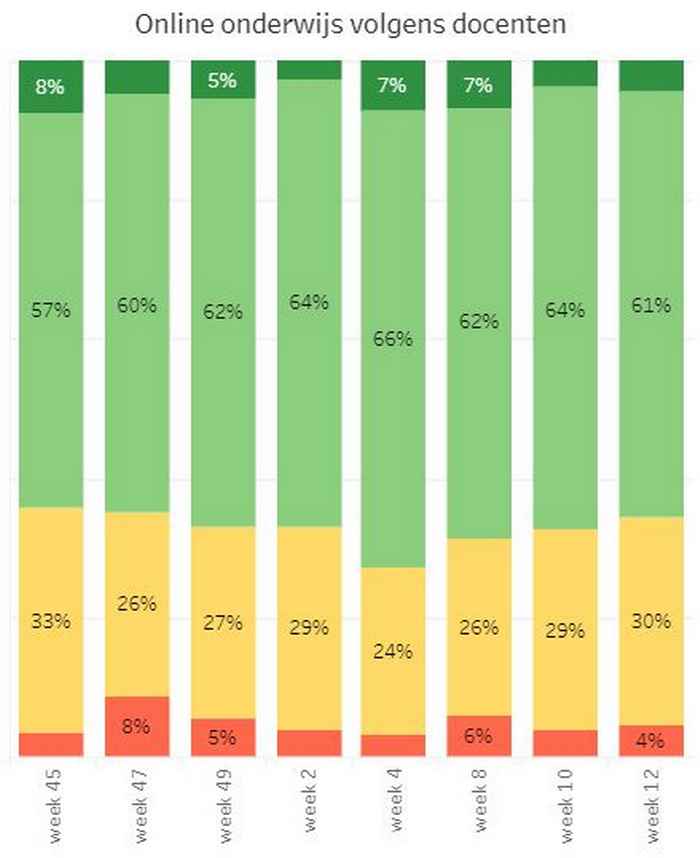
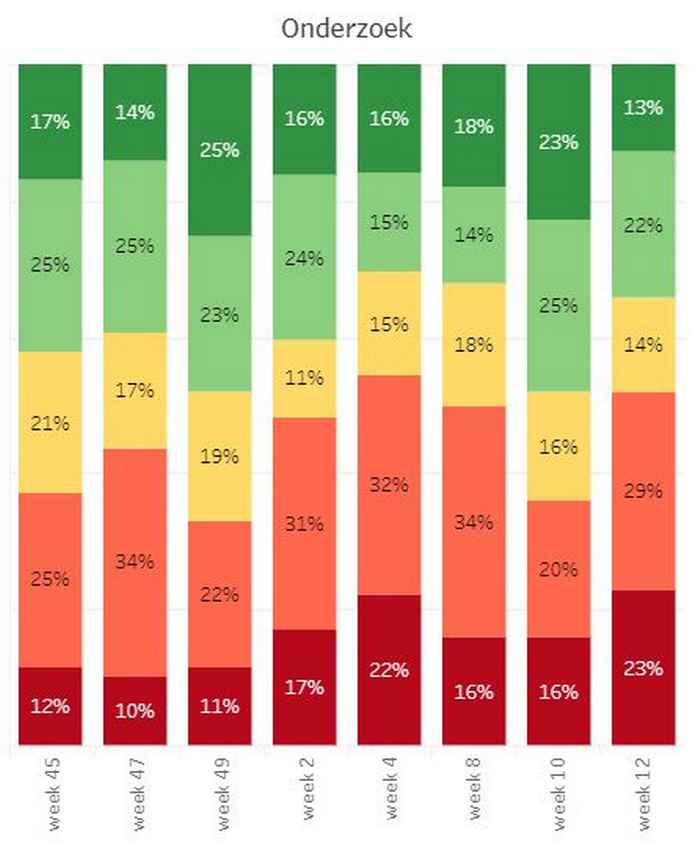
Work-life balance
In an additional edition of the Crisis Monitor, which was conducted in February, employees were asked more specifically about their home situation. The results showed that having young children - in combination with not being able to share care with a partner, not having their own workspace in the house, or having other care tasks - plays an important role in work pressure, stress and work-life balance. About 7.5% of employees are in such a situation.
Based on the results, it appears that not all employees are making use of existing opportunities to achieve a better work-life balance. For example, employees with a high workload and disturbed work-life balance who do not have their own workspace at home indicated that working at a UvA location could help them restore that balance. The UvA's policy is that everyone works from home where possible, but exceptions can be made under specific circumstances. There are also other options, such as making work fit more easily around other responsibilities, for example by adjusting working hours or postponing projects
There are also various places for employees to go for help and support: their manager, company social workers, the coaches of ProActief, the health and safety coordinator or directly to the Occupational Health and Safety Service. There is also the Mental Health toolkit of the Occupational Health and Safety Service. As with students, PhD candidates can also make use of the Student Psychologists.
Crisis Monitor responses
Once every eight weeks, students and employees are invited to participate in the Crisis Monitor. The average response among students over the ten rounds of the Crisis Monitor is 12%. Employees have a higher response rate: more than a quarter (26%) over the eight rounds to date.
